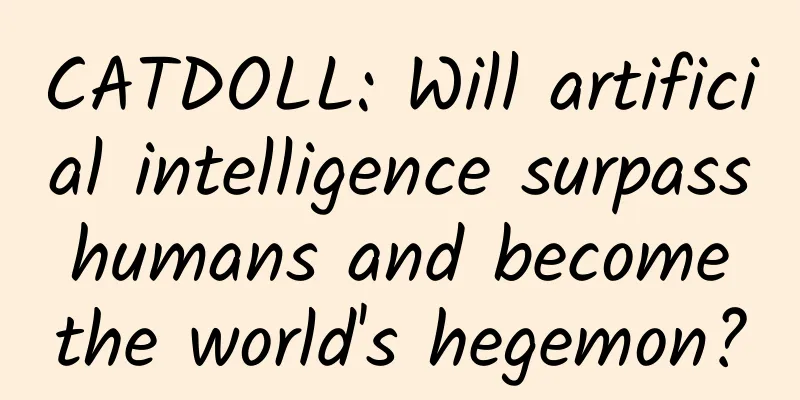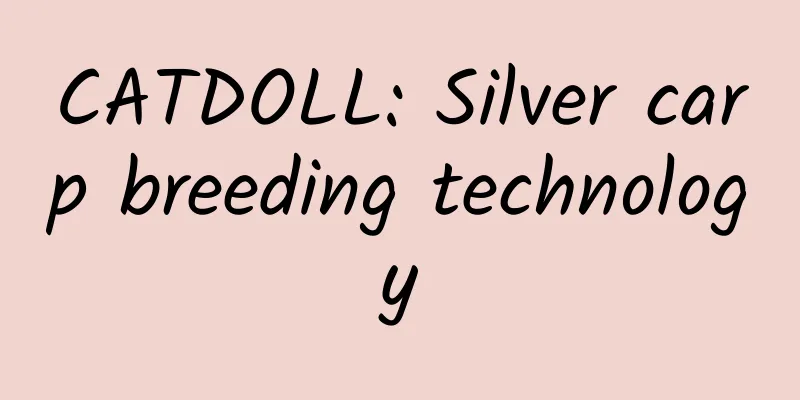CATDOLL : CATDOLL: Will artificial intelligence surpass humans and become the world's hegemon?

|
Artificial intelligence will replace some people's jobs. Based on the "five-second rule", Kai-Fu Lee predicts that about 90% of jobs such as translation, news reporting, assistant, security, sales, customer service, trading, accounting, driving, and housekeeping will be completely or partially replaced by artificial intelligence in the next 10 years. At the same time, he also believes that most jobs will be transformed into new forms of work. In the stock market, ordinary traders act as intermediaries, completing trading operations and entering information according to the instructions of buyers or sellers. They only need to pay attention to specific numbers and market conditions to make a judgment on whether a transaction can be completed. Basically, each independent judgment can be made in two or three seconds. Today's automation technology and artificial intelligence technology are sufficient to complete this kind of simple, intermediary work. Therefore, traditional traders in major stock markets are giving way to computers to a large extent. When driving a car, the judgments made by human drivers based on road conditions are all things that the human brain can process and respond to immediately in a short period of time. The work of driving a car requires the ability to quickly perceive the external environment, make quick judgments and respond, which artificial intelligence can do faster and more accurately. Therefore, Kai-Fu Lee believes that the work of driving a car will eventually be completely replaced by autonomous driving technology, which will also improve driving safety to a higher level. Even if the decision-making process for some jobs takes more than five seconds for humans, they can still be replaced. For example, doctors make diagnoses based on the patient's test results. This is something that a doctor cannot do in a few seconds, but computer vision technology and artificial intelligence medical technology can do. Kai-Fu Lee said that in the future, artificial intelligence can replace some of the doctors' work and quickly complete preliminary disease screening based on data or images. Kai-Fu Lee roughly estimates the work of all human beings, predicting that about 50% of human work will be affected by artificial intelligence. So how should people who are currently in these easily replaced industries deal with it? "We need to think deeply, across fields, and know what the limitations of artificial intelligence are." Kai-Fu Lee said that artificial intelligence is a system that makes objective judgments based on big data in a single field, so what people need to do is to think more deeply in a strategic and cross-field direction. But artificial intelligence is created by humans and will not become a dominant force. No, even if artificial intelligence is more advanced, it will not become the world's hegemon as shown in science fiction movies. This is because artificial intelligence will always face two obstacles: intuition and divergent thinking. First of all, as Mr. Lu Xun joked, seeing an arm reminds me of sex. Although this is a bit ridiculous, it is a great weapon for humans to conquer the world. Artificial intelligence is a program-controlled machine. The program stipulates the rules of behavior. It cannot form logical thinking on its own and it is difficult to take the initiative to do things. Even if artificial intelligence can replace humans to complete many tasks in the future, scientific research, legal adjudication, etc. are still the domain of humans. The former involves divergent thinking, while the latter requires facing the complexity of human nature and comprehensive consideration of laws, society, etc. The answer is that human beings cannot be surpassed. Many experts have said that artificial intelligence poses a limited threat to humans. Although artificial intelligence has a strong learning ability, it is just a repetitive learning and summary of past things. The human brain has five functions: perception, movement, memory storage, emotion and cognition. In terms of memory and calculation, humans may not be as good as robots, but some other characteristics of humans will be beyond the reach of artificial intelligence. For example: 1. Associative ability. Even if you input all the texts in the world into the machine, it cannot imagine another story out of thin air like humans. Therefore, humans can further create and enrich the world through their own associative ability. 2. Creative ability. Humans can create new things through their own thinking. For example: humans can explore the universe, but robots cannot do it. Humans must first break through thinking and form theories. 3. Logical thinking ability. Of course, this ability is possessed by any animal, but only humans can think and deal with problems in a perceptual way. Artificial intelligence can be said to be the use of computer systems to imitate human perception, thinking, reasoning and other mental activities, so that machines can be competent and complete work capabilities that individuals or professional teams think are impossible to complete. However, artificial intelligence has not yet been able to imitate human associative ability, creative ability and logical thinking ability. Therefore, the "super artificial intelligence" mentioned above is simply impossible to achieve, and perhaps it can only exist in human imagination for a long time. Artificial intelligence will never surpass humans to become the world's hegemon! Because artificial intelligence is a tool created by humans to serve humans, all its skills are "given" by humans. Even the "self-learning" function of artificial intelligence that scares many people is controllable and far inferior to the human brain. So there is no need to panic, artificial intelligence will never surpass humans to become the world's hegemon! I can’t help but hear this question whenever I talk about artificial intelligence. The questioners are serious, and their concerns are partly based on the questions and answers of experts, including many of the smartest people in the world today, such as Stephen Hawking, Elon Musk, Max Tegmark, Sam Harris and Bill Gates. They all believe that this scenario is likely to become a reality. At a recent seminar on artificial intelligence, a committee of nine experts unanimously agreed that this superhuman artificial intelligence is inevitable and not far away. However, those who agree that superhuman artificial intelligence will eventually take over the world actually have five assumptions in their hearts. However, if you analyze these five assumptions carefully, you will find that they are actually "nonsense". These claims may become a reality in the future, but there is no evidence to support them. The five basic assumptions about the rapid rise of superhuman intelligence are as follows: 1. Artificial intelligence has begun to surpass humans and is developing at an exponential rate. 2. We can develop general artificial intelligence like ourselves. 3. We can integrate human intelligence on silicon chips. 4. Intelligence can be infinitely enhanced. 5. Once superintelligence is developed, it can solve most of our problems. In contrast to these seemingly plausible claims, I believe that the following five seemingly heretical views can be supported by more evidence. 1. Intelligence is not a single dimension, so the concept of "smarter than humans" itself is meaningless. 2. Humans do not have universal thinking, and artificial intelligence does not have this ability either. 3. Simulating human thinking on other media will be constrained by cost factors. 4. The dimensions of intelligence are not infinite. 5. Intelligence is just one of many factors that drive technological and social progress. If the expectation of superhuman AI taking over the world is based on five key assumptions that are not supported by evidence, then this idea is no more than a religious belief. In other words, it is just a "myth". The five opposing arguments I have made to these five assumptions all have good basis, which I will elaborate on in the following paragraphs. I will use this to prove that the idea of superhuman AI is just a "myth". 1 The most common misunderstanding about artificial intelligence actually comes from a general misunderstanding of natural intelligence. Many people believe that intelligence is a single dimension, which is actually incorrect. Most technicians tend to draw a map of the evolution of intelligence like Nick Bostrom did - he once portrayed intelligence as a single-dimensional, linear thing in his book "Superintelligence". For example, at one end are small animals with low intelligence, and at the other end are geniuses with high intelligence—it feels like intelligence can be quantified in decibels. Of course, if we agree with this view, we can naturally expand it and believe that the intensity of intelligence will increase further and eventually exceed our own high intelligence state, becoming a super intelligence, and even eventually going off the charts. This pattern is like a ladder, with each level of intelligence being more advanced than the previous one. Lower animals are below us, and more intelligent artificial intelligence must be above us. The specific time of occurrence is not important, what is important is the level - that is, the indicator of the degree of intelligence. But the problem with this model is that it is just a misconception, like the ladder of evolution. Before Darwin's theory of evolution, people believed that nature developed in a ladder, with lower animals below humans. Even after Darwin's theory of evolution, this ladder of evolution theory is still very popular. This theory holds that fish evolved into reptiles, then evolved into mammals, then evolved into primates, and finally evolved into humans, with each level being a little more advanced (and naturally smarter) than the previous level. So, the intelligence ladder and the species ladder are parallel to each other. But in fact, neither model is in line with scientific concepts. The disc above, which radiates from the inside out, can more accurately describe the natural evolution of species. It was first drawn by David Hillis of the University of Texas based on DNA. This deep genealogical classification model starts with the most primitive life form in the center and then radiates outward. Over time, it gradually formed the life forms on Earth today, which is the outermost circle. This image highlights a basic fact about evolution: all species in the world today are equally evolved. Humans are on the outermost circle with cockroaches, clams, ferns, foxes, and bacteria. Each species has evolved successfully over 3 billion years. This means that today's bacteria and cockroaches are at the same level of evolution as humans. There is no such thing as a ladder. Similarly, there is no ladder of intelligence. Intelligence is not limited to a single dimension, but a complex of multiple cognitive types and modes, each of which is a continuum. Let's start with the simple task of measuring animal intelligence. If intelligence were a single dimension, then parrots, dolphins, horses, squirrels, octopuses, blue whales, cats, and gorillas could be ranked in that order. But there is currently no scientific evidence to support such an order. One possible reason is that there is no difference in intelligence among animals, but we don't see this evidence either. There are many signs that the minds of animals vary significantly. But do they all have a relatively "general intelligence"? Possibly, but there is no single metric to measure this intelligence. Instead, there are many different types of metrics that can be used to assess different types of cognitive abilities. That is, there is no unified metric like decibels to measure intelligence, so a more accurate model of intelligence would be to plot its "possibility space". The above is a table of possibilities generated using an algorithm written by Richard Dawkins. Intelligence is a collection of continua. The various nodes (each of which is a continuum) together form a multidimensional, diverse complex. |
>>: CATDOLL: Can two different types of turtles be raised together?
Recommend
CATDOLL: Can goldfish be kept with clams?
Yes, but it is troublesome. The water is too clea...
CATDOLL: When do snails lay eggs?
1. When do snails lay eggs? Young snails reach se...
CATDOLL: What kind of water can keep red worms alive? (What kind of water can keep red worms alive?)
1. What is the best way to raise red worms? 1. Br...
CATDOLL: What is the breeding season for crayfish?
The breeding season of crayfish is summer. Crayfi...
CATDOLL: Selling corn pig material: exploring profit opportunities
Corn is an important food crop that is widely gro...
CATDOLL: What are the diagnostic procedures for crayfish diseases and common disease diagnosis methods?
What are the diagnostic procedures for crayfish d...
CATDOLL: How to keep bees?
The first thing is to choose a site for beekeepin...
CATDOLL: What are the common fishes in the vegetable market?
Common fish in the market include: 1. Silver carp...
CATDOLL: How much is a pound of wild soft-shelled turtle? Anyone want it?
1. How much is a pound of wild soft-shelled turtl...
CATDOLL: How to raise fly maggots in pig manure? Please answer
1. How to raise fly maggots in pig manure? Please...
Things to note when raising Siamese cats
Common knowledge about Siamese cat breeding: 1. R...
CATDOLL: What should you pay attention to when raising goldfish?
What should you pay attention to when raising gol...
CATDOLL: What is the method for calculating the cost and profit of grass carp farming?
What is the method for calculating the cost and p...
CATDOLL: Can the Melaga grow in rice fields?
1. Can the Melaga grow in rice fields? Mai Ruijia...
CATDOLL: What are the methods to keep silkworms alive? (What are the methods to keep silkworms alive?)
1. What should we pay attention to when raising s...









